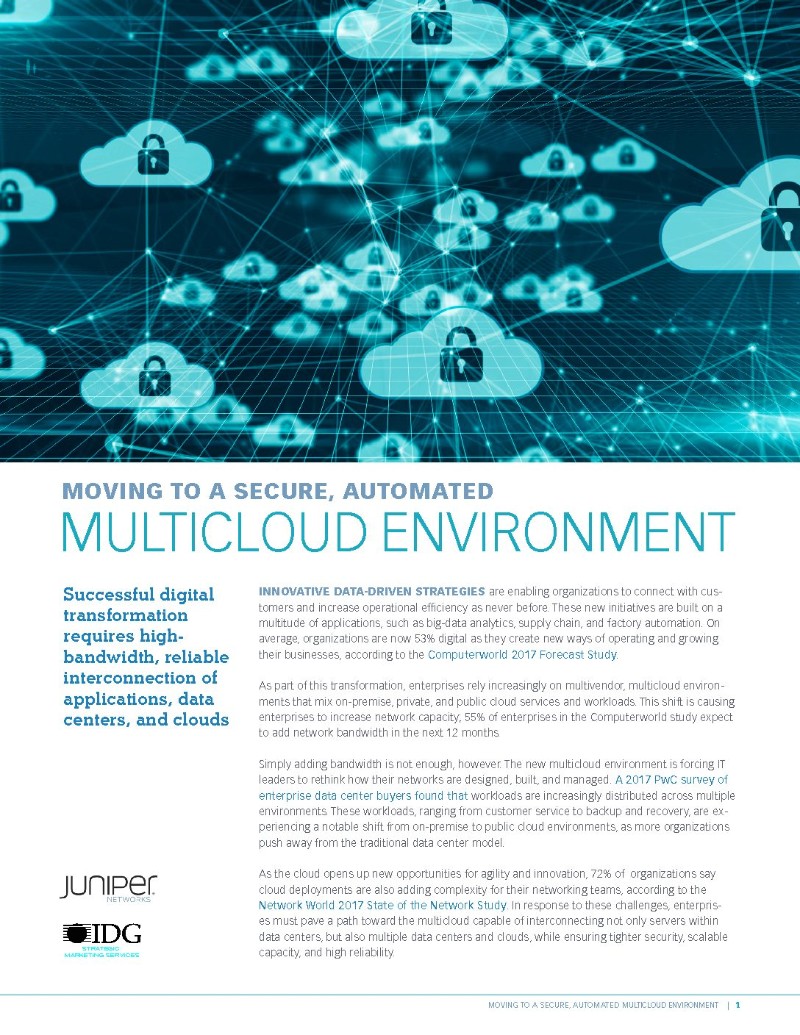Moving to a secure multi cloud environment
Published on 03 Sept 2020

Successful digital transformation requires high bandwidth, reliable interconnection of applications, data centers, and clouds:
Innovative data driven strategies are enabling organizations to connect with customers and increase operational efficiency as never before. These new initiatives are built on a multitude of applications, such as big-data analytics, supply chain, and factory automation.
On average, organizations are now 53% digital as they create new ways of operating and growing their businesses, according to the Computerworld 2017 Forecast Study. As part of this transformation, enterprises rely increasingly on multivendor, multi-cloud environments that mix on-premise, private, and public cloud services and workloads.
This shift is causing enterprises to increase network capacity; 55% of enterprises in the Computerworld study expect to add network bandwidth in the next 12 months. Simply adding bandwidth is not enough, however. The new multi-cloud environment is forcing IT leaders to rethink how their networks are designed, built, and managed.
The changing demands on enterprise IT
The role of IT:
Is fundamentally changing from what used to be cost-efficient enablement to more strategic contribution to the enterprise. For companies born before the digital era, IT is a key player on the path to digital transformation. For companies founded more recently with technology at their cores, IT represents a foundational pillar on top of which everything else is built.
Automation has overtaken TCO:
Automation has overtaken TCO as a primary driver for enter praise IT. The focus on automation, agility, and innovation suggests that future benchmarks for data center networking will be more about IT’s keeping pace than containing costs. In essence, if the network stands in the way of digital transformation and new service delivery, then CIOs and their networking teams will find corporate life more difficult.
Cloud is imminent:
Companies are not going to simply retool their existing environments for more secure, more automated networking. PwC’s research indicates that this movement to the cloud is happening across all major classes of workloads, from customer service to broader business applications. The move to the cloud means that security and automation will need to address both the current state of IT and the likely hybrid- and multi cloud future state.
Operating within constraints:
While the PwC findings indicate that security and automation are top data center networking priorities, this does not mean that IT leaders can operate without constraints. The reality is that enterprise networks will be expected to better support their companies’ security and automation objectives, but that support will have to come without floating the overall spend to unaffordable levels. This means that enterprise IT will have to carefully navigate a transition that requires straddling both legacy and multicloud technologies, which will have different tools and processes.
See Also: Support more remote workers
